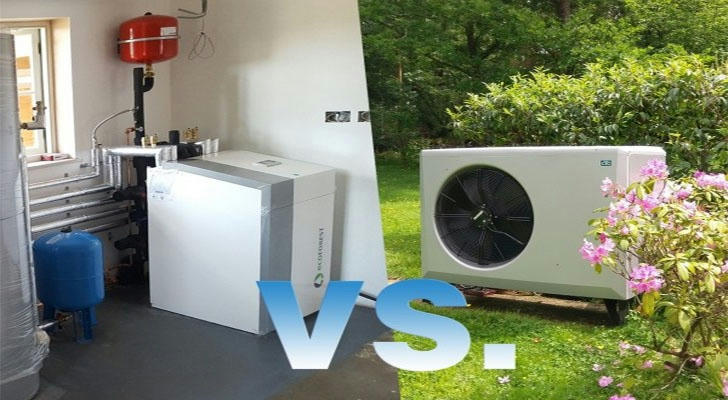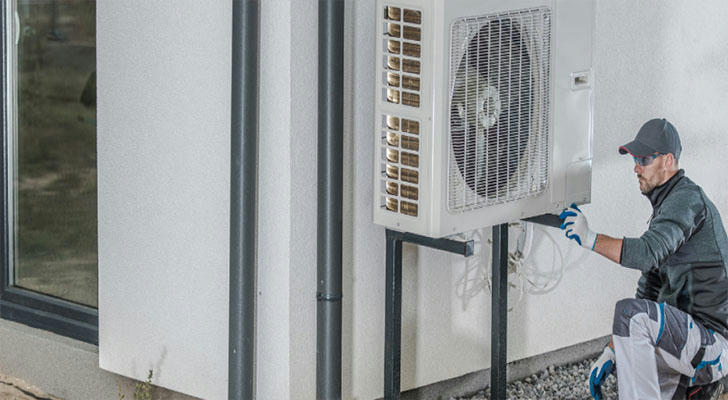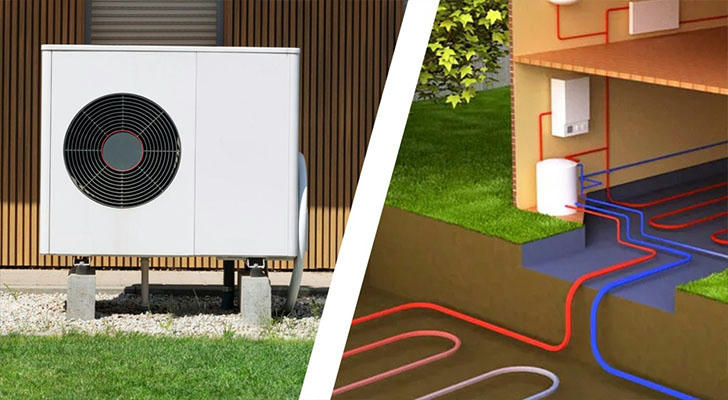Air Source Heat Pumps vs. Ground Source Heat Pumps: Which is Better for Your Home?

With the rise of energy-efficient and eco-friendly technologies, heat pump systems have become a popular choice for homes seeking efficient heating and cooling solutions. Two common types of heat pumps are air source heat pumps (ASHP) and ground source heat pumps (GSHP). Each has its unique advantages and is suitable for different households and climates. This article explores the key differences between these systems, their energy-saving potential, maintenance costs, and how to choose the best option for your home.
Air Source Heat Pumps vs. Ground Source Heat Pumps: Which is Better for Your Home?
1. Energy-Efficient Heating and Cooling Systems: Air Source vs. Ground Source Heat Pumps
Air Source Heat Pumps (ASHP) extract heat from the outside air to heat your home or, in cooling mode, expel heat outside. They are especially efficient in moderate or warm climates and are ideal for homes that need a quick installation with lower upfront costs. ASHP systems don’t require underground installation and are relatively simple but may lose efficiency in extremely cold conditions.
Ground Source Heat Pumps (GSHP), on the other hand, use a network of underground pipes to extract heat from the ground or release heat into it, depending on the season. Because ground temperatures remain stable year-round, GSHPs perform well in both summer and winter. They are especially effective for homes with long-term energy savings in mind, as their efficiency remains consistent regardless of outdoor temperatures.

2. The Importance of Choosing the Right System for Your Home
Heating and cooling needs, budget, and energy-saving goals vary from home to home, making the right choice of heat pump system essential. For homes in mild climates, an air source heat pump's lower initial cost makes it a practical choice. In colder regions, ground source heat pumps offer greater efficiency and long-term savings. Factors such as home size, local climate, and future energy costs can help guide you to the best option for your situation.
3. Energy Efficiency Differences in Varying Climates
Air Source Heat Pumps work exceptionally well in warm or mild climates but may become less efficient in extremely cold environments, where less heat is available to extract from the air. In these conditions, backup heating systems may be needed, increasing energy costs.
Ground Source Heat Pumps maintain excellent efficiency in both hot and cold climates because they rely on the stable underground temperature. For homes in colder climates, GSHPs offer consistent performance throughout the winter, reducing energy waste and keeping heating costs low.
4. Comparing Maintenance and Long-Term Upkeep Costs
Air Source Heat Pumps require relatively simple maintenance, including regular cleaning of external units and checking the system for proper operation. Due to their exposed nature, ASHP units may wear down faster from exposure to the elements, but repair costs are typically lower.
Ground Source Heat Pumps, with their underground pipe systems, have fewer maintenance requirements and can last over 20 years. However, the initial installation is more expensive, especially for laying the underground pipes. While rare, underground system failures can be costly to repair. Homeowners choosing GSHP should weigh the high upfront cost against the long-term energy savings.

5. The Role of Government Subsidies and Environmental Policies in Your Decision
Government incentives and environmental policies play a significant role in deciding which heat pump system is best for your home. Air source heat pumps often come with moderate rebates and tax credits due to their lower installation costs, making them attractive for budget-conscious homeowners looking for a quick return on investment.
Ground source heat pumps, with their higher initial costs, usually qualify for more substantial government subsidies and tax incentives, particularly for households focused on long-term energy savings. Additionally, many environmental programs offer further support for GSHP users. Understanding local subsidy programs can help reduce the initial investment and make the system more affordable.
6. Case Studies: Successful Applications of Heat Pumps
Case 1: A family in California chose an air source heat pump for their home. With the mild climate, the system provided excellent year-round efficiency and required minimal maintenance. The family saw a 30% reduction in annual energy costs and enjoyed a comfortable living environment.
Case 2: A household in Minnesota installed a ground source heat pump, despite the high initial installation cost. In the cold winters, the GSHP performed exceptionally well, offering consistent heating at a low energy cost. Within a few years, the family had significantly reduced their energy bills, expecting to recoup the investment in the coming years.
7. How to Make the Right Choice?
Choosing the right heat pump system for your home requires balancing upfront investment, energy efficiency, and government incentives. For homes in mild climates with budget constraints, air source heat pumps are an affordable, energy-efficient choice. In contrast, for those in colder climates aiming for long-term energy savings, ground source heat pumps are ideal despite their higher installation cost.
Opting for the right system significantly impacts your home’s energy efficiency and comfort. Before making a decision, consulting a professional heat pump installation company can provide valuable insights tailored to your home’s specific heating and cooling needs.
Conclusion
Whether you choose an air source or ground source heat pump, both offer energy-efficient heating and cooling solutions for your home. By considering factors like climate, budget, and government incentives, you can make an informed decision that suits your needs. Working with professionals ensures optimal system installation and performance, leading to long-term savings and enhanced home comfort.
